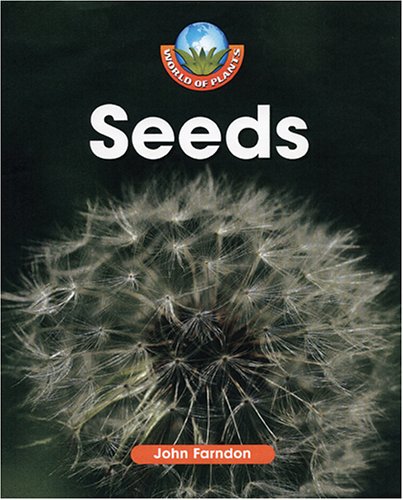-
Why Do Plants Have Flowers?
Louise Spilsbury, Richard Spilsbury
Paperback (Heinemann, Sept. 14, 2005)Lots of different plants grow bright, colorful flowers. Plants have flowers to make seeds. Seeds are parts that can grow into new plants. Plants and animals produce young that grow up to be like themselves. This is called reproduction. Cats have kittens, birds lay eggs and most plants make seeds. M
M
-
Why Do Plants Have Flowers?
Louise Spilsbury, Richard Spilsbury
Paperback (Heinemann, Aug. 1, 2016)Lots of different plants grow bright, colorful flowers. Plants have flowers to make seeds. Seeds are parts that can grow into new plants. Plants and animals produce young that grow up to be like themselves. This is called reproduction. Cats have kittens, birds lay eggs and most plants make seeds. M
M
-
World of Plants - Seeds
John Farndon
Hardcover (Blackbirch Press, Jan. 6, 2006)Nearly every plant begins life as a seed. This book examines germination, the ways seeds are spread, types and sizes of seeds, and the role of seeds in the diets of both humans and animals. Y
Y
-
How Do Meat-Eating Plants Catch Their Food?
Ruth Owen
Hardcover (PowerKids Press, Aug. 1, 2014)Who knew plants could be so terrifying? In this fascinatingly gruesome science title, readers will learn how infamous meat-eating plants such as the Venus flytrap catch their prey. With well-organized and clearly articulated text, readers will easily grasp important life science concepts. M
M
-
How Do Plants Defend Themselves?
Ruth Owen
Hardcover (PowerKids Press, Aug. 1, 2014)Though people dont often think of plants as needing to defend themselves, this book will illuminate the many ways that plants have developed defense mechanisms through subtle change over time. From prickly cactus spines to color changing and camouflage, varied adaptations of several plant species are covered. The illustrative labeled photos bring this fascinating topic to life and reinforce the concepts readers have learned. M
M
-
How Do Plants Defend Themselves?
Ruth Owen
Paperback (Powerkids Pr, Aug. 1, 2014)Though people dont often think of plants as needing to defend themselves, this book will illuminate the many ways that plants have developed defense mechanisms through subtle change over time. From prickly cactus spines to color changing and camouflage, varied adaptations of several plant species are covered. The illustrative labeled photos bring this fascinating topic to life and reinforce the concepts readers have learned. M
M
-
What Is a Plant?
Louise Spilsbury, Richard Spilsbury
Library Binding (Heinemann, Sept. 14, 2005)Plants are living things. Like us they grow, feed and produce young. There are lots of different kinds of plants, from weeds to trees. They may look different but we can group them together because they have some important things in common. L
L
-
Why Do Plants Have Flowers?
Louise Spilsbury, Richard Spilsbury
Library Binding (Heinemann, Sept. 14, 2005)Lots of different plants grow bright, colorful flowers. Plants have flowers to make seeds. Seeds are parts that can grow into new plants. Plants and animals produce young that grow up to be like themselves. This is called reproduction. Cats have kittens, birds lay eggs and most plants make seeds. M
M
-
The Medieval Knight
Christopher Gravett
Hardcover (Brighter Child, Feb. 9, 2001)Step inside the world of the medieval knight…into his castle as he prepares for a feast in the Great Hall, as he enters into battle and as he mounts his hors3e preparing for the joust.In The World of the Medieval Knight stunning cutaway views, brilliant panoramas and step-by-step sequences are all created by the illustrator Brett Breckon. His unique “exploded views” reveal in lavish detail the intricate way the knight’s armor was built.Discover how a page learned how to become a knight, how a knight’s horse was armed, how a castle was attacked and defended, how heavy the knight’s armor really was and what happened to the role of the knight. W
W


